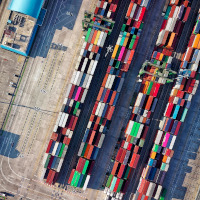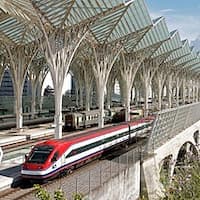research
Decarbonising Public Transport: Insights from Fiji´s Electric Bus Project
Article adapted from original article by Alex Mumbrú Camprubí and Genís Majoral Oller
Road transport in Fiji is highly dependent on petroleum fuels and accounts for 60% of the total petroleum consumption in the country. CIMNE’s Innovation Unit in Transport (CENIT) has developed the Route Prioritization for Phasing in of Electric Buses in Fiji (Global Green Growth Institute, GGGI) to support the adoption of electric buses by evaluating the electrification potential of main public transport routes through Green Climate Fund (GCF) Readiness funding.
Through this project, experts at CIMNE identified the most suitable routes for implementing electric buses, laying the groundwork for future studies and efforts in Fiji's transition to electric public transport.
Fiji’s Public Transport Context
As a Small Island Developing State (SID) with around 900,000 inhabitants, Fiji is committed to reducing its fossil fuel consumption as noted in its Nationally Determined Contributions (NDC) to GHG reductions and the Fiji 2018 LEDS (Low Emission Development Strategy). Several studies, such as the Greater Suva Transportation Strategy (GSTS), have focused on greening Fiji’s land transport. Decarbonizing buses, the most widely used form of public transportation in the islands, would mark a significant step forward in this effort.
Fiji’s Enhanced 2020 NDC (Nationally Determined Contributions) aims for a 30% emission reduction and net-zero emissions by 2050, with electric vehicles playing a key role in achieving this goal. The NDC Investment Plan, developed by the Climate Change Division of Fiji’s government, highlights Electric Vehicle Network Development as a priority, and the Fiji NDC Implementation Roadmap 2017-2030 targets a reduction of 137,000 tCO2 per year in the transportation sector. This includes vehicle replacement programmes for various types of vehicles, which is expected to significantly contribute to CO2 mitigation.
CIMNE’s role in the green transition
Building upon the preceding context, exerts at CIMNE’s Innovation Unit in Transport (CENIT) have evaluated the viability of transitioning key public transport corridors to electric propulsion systems by assessing technical, operational, and economic feasibility.
The study’s objective has been to determine optimal routes for electric bus deployment, establishing a foundational framework to guide subsequent analyses and strategic initiatives aligned with Fiji’s broader transition toward sustainable public transportation infrastructure.
Methodological Approach: Examining and assessing Fijian bus routes
The project comprised three phases: first, data collection and preprocessing; second, bus route prioritisation through a Multi-Criteria Analysis (MCA); and finally, the development of an implementation roadmap, a strategic plan detailing the necessary steps and actions to successfully introduce and integrate electric buses into Fiji's existing public transport system.
During the first phase, which involved data collection and preprocessing, it was essential to gather information about Fiji’s bus routes. The necessary data, including bus routing and timetables, was collected from multiple stakeholders, such as official bodies and bus operators, by local consultant Dr. Joeli Varo, a GIS specialist. Dr. Varo also assisted in the subsequent digitisation of the routes. Due to the variety of sources, one of the main challenges of the study was the heterogeneity of the available data and the required preparation and preprocessing.
The physical characterisation of the current bus system involved the digitalisation of the mapping of the routes and obtaining the operational parameters of velocity, slope, and energy requirements for each route. The operational characterisation of the system involved the digitalisation of the timetables (which often takes the form of scanned timetables), matching timetables with GIS routes, the estimation of the necessary fleet, expeditions per day and week, and frequencies. Viti Levu island, the region of the electrification study, consisted of more than 320 routes.
In order to conclude the data preprocessing phase, a preliminary assessment of the feasible routes was conducted taking into account battery range constraints and the challenges posed by rural routes, such as sealed or unsealed conditions, which complicate bus electrification due to mechanical issues and performance on sloped terrains.
To tackle the challenges with rural lines and the implementation of new electric buses, an alternative solution was proposed: retrofitting the current buses operating in rural conditions. This option has both pros and cons. On the one hand, it reduces the initial investment cost; however, it also decreases the electric battery range, which, as mentioned earlier, is a limiting factor in the electrification of buses.
Once the first phase was completed, the second phase, MCA prioritisation of the bus routes was carried out. The input to the multicriteria analysis was the bus routes as alternatives, each evaluated based on different criteria. In light of the available data, the final criteria used were based on the following groups:
-
Operational dimension
-
Social, environmental and economic factors
-
CAPEX and OPEX costs
The criteria governing the evaluation and appraisal of bus line electrification were based on the World Bank reference on the Economics of Electric Mobility. This framework evaluates changes in the economic landscape when introducing electromobility using the following formula:
ΔNSC=ΔPV(Capital Costs)+ΔPV(Operating Costs)+ΔPV(Charging Infrastructure)+ΔPV(Externalities)+ΔPV(User Costs)
To evaluate the cost variations for each scenario (e-Bus vs. Business as Usual), the following MCA criteria were selected to compare the differences for each route in both scenarios: costs (purchase, maintenance and recharging infrastructure), externality savings, operational criteria (demand served, frequency of operation, line type), and other criteria (fleet age and operator readiness).
Additionally to the MCA criteria and results, two other aspects were considered for the final bus route prioritisation: on the one hand, the readiness level or capacity of bus route operators to implement electromobility solutions (evaluated qualitatively), and on the other hand, the synergies among operators. Synergies can reduce the burden of charging infrastructure through shared resources.
Two options to generate synergies include:
-
Number of lines at the same depot: Having multiple lines originating or terminating at the same depot reduces infrastructure costs. If schedules allow, once one bus is charged, another can use the same charging station.
-
Total number of lines: Economies of scale mean that the more lines an operator has available for electrification, the lower the costs per unit will be for acquisition and maintenance.
Both aspects were addressed and considered in the third and final phase of electrification roadmap implementation.
Additionally, in order to ensure that the project aligned properly with the interests and priorities of local stakeholders, a complementary data collection effort was conducted to gather insights from stakeholders for developing the multicriteria analysis and understanding the nuances of the bus sector in Fiji. An online questionnaire was prepared and sent to local stakeholders (local transport agency, operators, ministers, etc.), and a meeting was held. The online survey results provided the weights for the MCA, while the meeting allowed for a more qualitative evaluation of the operators' readiness and feasibility as well as synergies.
Key Findings from MCA prioritization
The following picture (Figure 1) illustrates the assessment results. It shows how new electrified routes (Cluster 1) are concentrated in the Suva region and are mainly urban. In contrast, retrofitted lines (Cluster 2) expand into the hinterland from Suva and Nausori, starting at Navua, the main cities in the south coast region of Fiji.

Figure 1. Mapping of the feasible cluster 1 (lot 1) and cluster 2 routes analysed.
Furthermore, due to the close scores, the final selection of routes for electrification within this cluster will depend on a qualitative analysis, considering additional constraints or parameters. These include synergies, readiness, size, the predisposition of bus companies to electrification, and alignment between operators, technology providers, and the public sector and decision-makers. This qualitative analysis forms part of Fiji’s Bus Route Electrification Roadmap.
Additionally, retrofitted lines demonstrated comparable performance to new electric buses for the analyzed routes, underscoring their effectiveness. This approach is crucial for addressing challenges in rural areas where deploying new electric buses may be more complex.
Moreover, the MCA results revealed a positive correlation between investment costs or total costs and emission savings, justifying investment in electrification for lines with higher initial or fleet costs.
Furthermore, considering the variables of total costs and emission savings in relation to line typology (Figure 2), it becomes evident that the greatest savings in externalities are concentrated in urban lines. Lower electric consumption at lower speeds contributes to reduced CO2 emissions associated with the electric grid. Although electric buses do not generate combustion emissions, the production of electric energy does, which was considered in this analysis. Routes with higher average speeds, such as long-distance and high-velocity lines, were found to potentially increase net CO2 emissions post-electrification due to faster battery consumption, making them less competitive compared to diesel buses, when considering the current CO2 emission factor of the electric grid.

Figure 2. Line type analysis: externality savings (USD) left and Total Costs (USD) right for feasible routes to electrify.
Despite this, Figure 3 shows that even for these lines, the overall savings in total emissions (CO2, NOX, VOC, and PM) are positive, not just CO2.

Figure 3. Line type analysis: externality savings (USD) left and Total Costs (USD) right for feasible routes to electrify.
Fiji’s Bus Route Electrification Roadmap
In the multicriteria analysis, quantifying operator synergies posed challenges due to the difficulty in correlating these synergies with economic impacts. The close scores suggested that final route prioritization should rely more on qualitative analysis. Thus, a qualitative approach was adopted. Integrating the multicriteria analysis results with sensitivity and robustness assessments, as well as evaluating sector readiness (including synergies within operators and bus depots), enabled the development of comprehensive guidelines and recommendations for Fiji's electric bus implementation roadmap.
Figure 5 outlines the study's recommendations based on clusters and lots identified during the multicriteria analysis, sensitivity, and robustness assessments. Lot 1, consisting of the most feasible lines under stringent battery and road condition assumptions within Cluster 1, was recommended for initial electrification using commercially available electric buses. Among these, the top three lines identified by the MCA as robust under the robustness analysis were recommended as pilot studies.

Figure 5. Implementation roadmap workflow
Over time, subsequent electrification efforts were suggested to focus on the remaining lines in Lot 1. The exact implementation sequence thereafter depends on sector conditions and technological advancements at the time of electric bus deployment, as indicated within the dashed blue square.
Lot 2, comprising routes feasible under more relaxed battery and road condition assumptions within Cluster 1, was highlighted in the sensitivity analysis. Additional routes identified depend on the potential relaxation of constraints used, with their feasibility contingent on technological readiness and sector dynamics.
Cluster 2 includes routes deemed potentially electrifiable. Further implementation guidelines were not advised due to dependencies on Fiji's retrofitting capabilities. Nonetheless, exploring their feasibility is strongly recommended, as this could overcome a significant barrier posed by Fiji's challenging road conditions.
Strategic Insights and Future Directions
The study on route prioritization for the introduction of electric buses in Fiji has provided essential insights and groundwork for sustainable public transport initiatives. By evaluating and prioritizing bus routes through a rigorous Multi Criteria Analysis (MCA), the project has identified viable paths toward reducing CO2 emissions and enhancing transport efficiency. The findings underscore the importance of considering factors such as operational feasibility, environmental impact, and economic viability in electrification decisions. This research serves as a critical stepping stone for GGGI for future studies aiming to fund the introduction of electric buses in the country. The prefeasibility study also highlighted both the challenges and opportunities inherent in transitioning to electric mobility in the Fijian context. This led to the implementation of retrofitted buses to address challenges in rural areas where deploying new electric buses may be more complex. This approach is crucial for reducing economic costs, which is particularly beneficial for developing countries, and when considering the entire lifecycle, may result in lower emissions.
Based on the lessons learned, the analysis revealed that electrifying certain bus routes, particularly those with high-speed and long-distance characteristics, could lead to increased CO2 emissions due to the carbon footprint associated with electricity production. This underscores the need for deeper research into these factors to determine under which circumstances electrifying the bus network is justified based on the carbon footprint of electricity production.
In light of these results, CIMNE experts aim to carry out further research that may help determine which regions, particularly small island states or nations most vulnerable to climate change, yield the most effective results for decarbonization. An example of this could be the development of retrofitting electric buses, which, when considering the entire lifecycle, may provide lower emissions and significantly reduce implementation costs, especially in developing states.






















